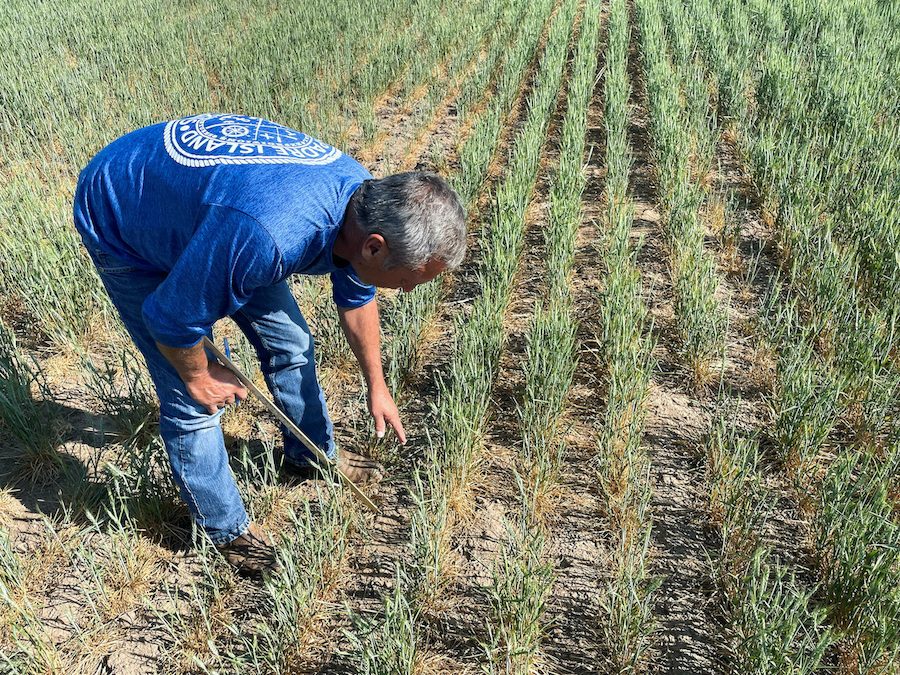SUMMARY
This is AI generated summarization, which may have errors. For context, always refer to the full article.

CHICAGO, USA – With planting roughly halfway complete, the 2023 US hard red winter wheat crop is already being hobbled by drought in the heart of the southern Plains, wheat experts said.
Planting plans may be scaled back in the US breadbasket despite historically high prices for this time of year, reflecting rising global demand and thin world wheat supplies projected to end the 2022-2023 marketing year at a six-year low. The tight supplies have been exacerbated as the conflict in Ukraine has disrupted grain exports from the Black Sea region.
The drought threatens Kansas, the top winter wheat growing state, and Oklahoma in two ways: discouraging farmers who have not yet planted from trying, while threatening crops already in the ground from developing properly.
“It’s sort of a grim situation,” said Kent Winter, who farms in Andale, Kansas, outside Wichita. He said he normally seeds by mid-October but has yet to plant any wheat this year.
If rain does not fall in the next 10 days, he will begin “dusting in” the crop and hoping for moisture. Final planting dates to receive full crop insurance coverage are approaching, ranging from October 15 in northwest Kansas to November 15 in the southeast.
Without moisture, wheat shoots may fail to emerge from the ground. Even a delayed emergence would threaten yield potential by narrowing the window for plants to develop a hardy root system and push out more stems, known as tillers, before winter.
“That puts a nail in the coffin,” said Mark Hodges, an agronomist for Plains Grains, an Oklahoma-based group that tests wheat for quality. Hodges said, “If you don’t have the tillers in the fall, it’s really hard to make up that number in the spring.”
Fears of a supply squeeze are underscored by the July Kansas City wheat futures contract trading around $9.40 a bushel, the highest price on record for a new-crop July contract at this time of year, the thick of the fall planting season.
About two-thirds of wheat in the United States, among the top five global exporters, is grown as a winter crop rather than spring.
While Plains farmers would like to take advantage of high prices, the dry weather may discourage producers from committing to supplies of high-priced seeds and fertilizer.
As a result, Justin Gilpin, chief executive of the Kansas Wheat Commission, expected the number of Kansas wheat acres planted for harvest in 2023 to remain steady with the 7.3 million acres seeded for 2022.
Winter concurred. “With the price of wheat, a lot of operators were planning to at least match or even up their acres for this coming year. But this drought is having a huge influence on plans,” he said.
Poor emergence could have a longer-term cost as well. Wheat helps anchor topsoil in the Plains, protecting it from wind erosion.
“No farmer wants to see his ground blowing. So you go ahead and plant wheat, and hope like heck you get it up before winter comes,” said Martin Kerschen, who farms in Garden Plain, Kansas.
Wheat is a famously hardy crop that can bounce back from struggles with poor weather. But forecasts are for drought to persist in the southern Plains through December.
In Kansas, 27% of the state is in “exceptional drought,” the most extreme category, and virtually the entire state is abnormally dry, according to the latest weekly US Drought Monitor report prepared by a consortium of climatologists.
A key driver of the drought is the La Niña weather phenomenon, which tends to favor warm and dry conditions in the Plains. The current La Niña is in its third year. – Rappler.com
Add a comment
How does this make you feel?





There are no comments yet. Add your comment to start the conversation.